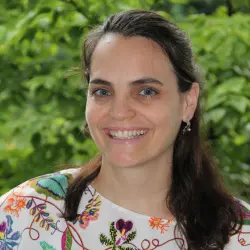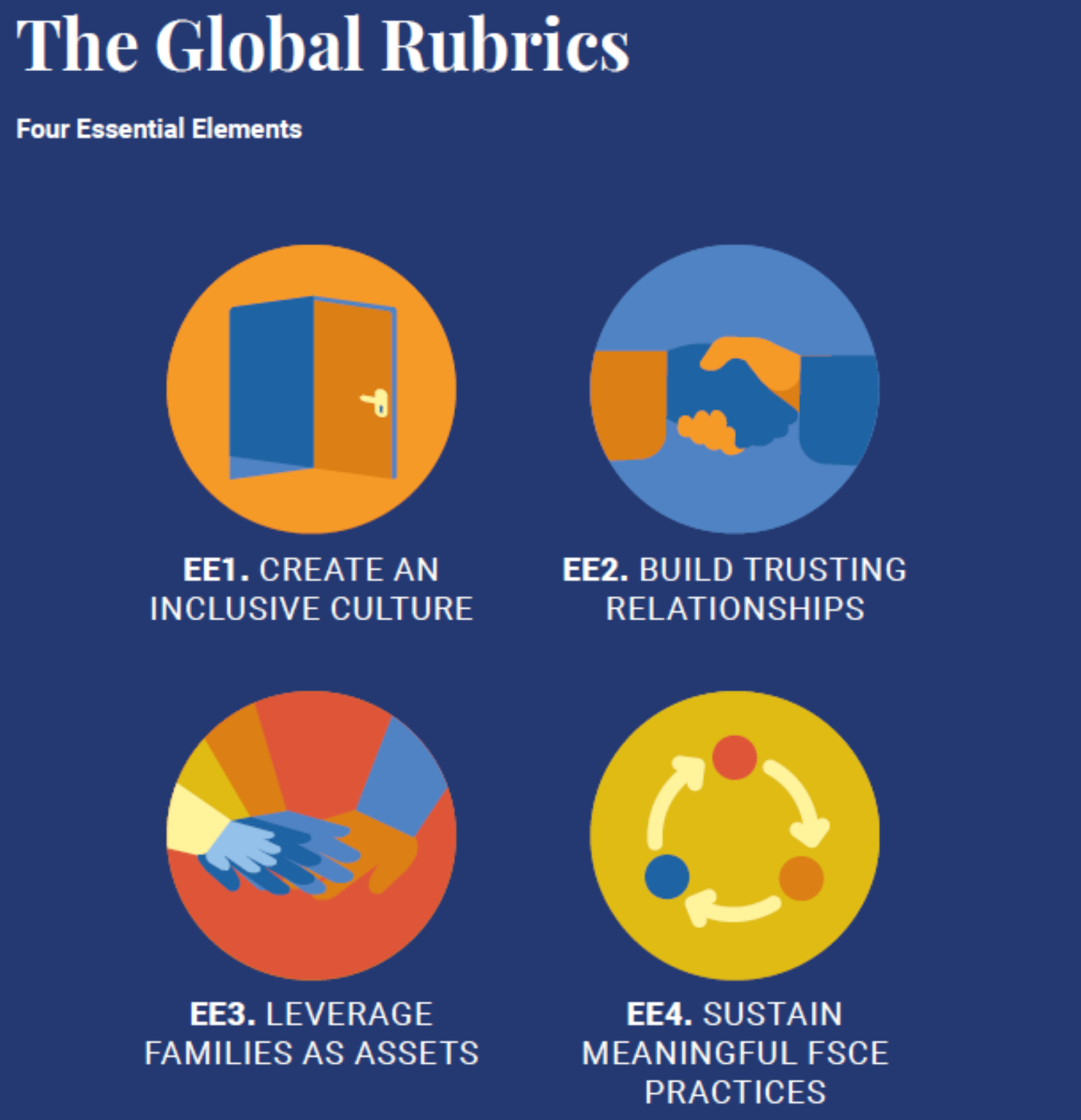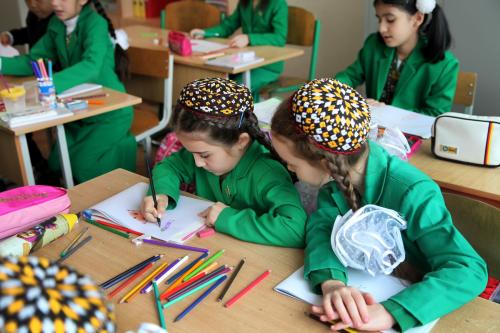The Global Rubrics Tool was updated on October 18, 2024.
Schools understand the importance of family, school, and community engagement, but they don’t know how to do it.
Education leader in Brazil
In many schools around the world, family, school, and community engagement is a nebulous concept, something that sounds warm and fuzzy but is hard to do in the day-to-day; or it may be a requirement – something that schools must do to check a box. As an education leader in Brazil pointed out, knowing how to actually dig into measuring and planning for family, school, and community engagement is more difficult than it sounds. The Global Family, School, and Community Engagement Rubrics Tool (“The Global Rubrics”) helps schools map where they are with family, school, and community engagement and determine where they want to go.
Responding to a need
The Global Family Engagement in Education Network—an international community of practice facilitated by the Center for Universal Education—identified the need for a rubric that helps schools assess where they are in building partnerships with families and provides examples of how to strengthen and expand their practices. The newly released and open-access Global Rubrics tool is different from other rubrics in that it was developed with educators from around the world and is centered around building inclusive and welcoming schools.1 Educators, government leaders, and parent organization representatives from five countries—Australia, Brazil, Canada, Colombia, and the US—worked together to develop the Global Rubrics to help guide educational institutions in assessing four critical elements for effective family, school, and community engagement. This group met virtually for 6 months to create indicators of practice, based on real examples sourced across borders and diverse school contexts, that can be used to inform new strategies to build stronger partnerships between families and schools.
The Global Rubrics are based on the Family, School, and Community Partnerships P-12 Framework Rubrics developed by Dr. Darcy Hutchins (Colorado Department of Education) and Dr. Steven Sheldon (John Hopkins University) for public schools in Colorado. Colorado’s Rubrics tool was developed through an 18-month feedback and data collection process. Since 2020, three cohorts of 19 districts in Colorado, ranging in size from large urban to small rural, have used the framework to understand the current landscape of family, school, and community partnerships in their schools and identify what to prioritize into action plans. Inspired by the tools and processes implemented in Colorado, the Global Family Engagement in Education Network collaborators created a rubrics tool that can be customized to different types of schools and communities. After the initial development phase, the Global Rubrics tool was contextualized and piloted in public schools in Brazil by Vozes da Educação, a national education organization, and in Colombia by Red PaPaz, a national network of parents and caregivers advocating for children’s rights in Latin America.
Guiding schools on a path forward
The Global Rubrics guide teams in identifying where they are in achieving four critical elements central to family, school, and community engagement and what they need to improve practices and policies moving forward. Each critical element has three key questions that school teams can use to assess their own practices and policies and determine how they can be even more inclusive and equity-oriented to engage all families. School teams are ideally composed of educators and families (and students above primary grades). Teams identify support mechanisms, practices, and policies that will improve family and community engagement in schools and use the Global Rubrics to track and chart progress and a path forward.
The four critical elements are 1) creating an inclusive culture, 2) building trusting relationships, 3) leveraging families as assets, and 4) dedicating necessary resources to sustain meaningful family, school, and community engagement practices.
Working together to support students and schools
The Global Rubrics give schools a tool for creating more accessible environments for all families and a process for educators to work more closely with families to support student and school outcomes. As a parent and researcher shared after using the Global Rubrics with a school team in Colombia, “the Global Rubrics tool created a space for schools to assess and understand this difference between their plan and the actual practice.” Equitable, inclusive, and effective family, school, and community engagement requires that schools understand the needs of their students and families and enact responsive and accessible practices that meet families where they are. In the current fast-paced environment of schools, where families and educators are struggling to find positive ways to connect, this tool offers a process to reflect, move plans into practice, and find common ground. Download the Global Rubrics here and let us know how you use the tool at [email protected].
-
Acknowledgements and disclosures
This Global Family, School, and Community Engagement Tool (“The Global Rubrics”) is based on the Family, School, and Community Partnerships P-12 Framework Rubrics developed for the Colorado Department of Education by Dr. Darcy Hutchins and Dr. Steven Sheldon. The Global Rubrics were developed by the following institutions and individuals in collaboration with the Global Family Engagement in Education Network Rubrics Working Group currently managed by the Center for Universal Education. The development was led by the Brookings Center for Universal Education (Emily Markovich Morris) and Instituto Salto (Laura Nóra) in collaboration with Australian Schools Plus (Karen Robertson), the Colorado Department of Education (Darcy Hutchins), Itaú Social (Esmeralda Macana),
Red PaPaz (Adelaida Gomez), Vozes da Educação (Carolina Campos), and Vision-Ed Consulting (Nancy G. Gordon). Cajon Valley Union School District (Michael Serban) also contributed to the review and development of the Global Rubrics. -
Footnotes
-
See the Appendix section of the Global Rubrics to learn more about other rubrics that are designed to measure family engagement practices.
-
See the Appendix section of the Global Rubrics to learn more about other rubrics that are designed to measure family engagement practices.
The Brookings Institution is committed to quality, independence, and impact.
We are supported by a diverse array of funders. In line with our values and policies, each Brookings publication represents the sole views of its author(s).







